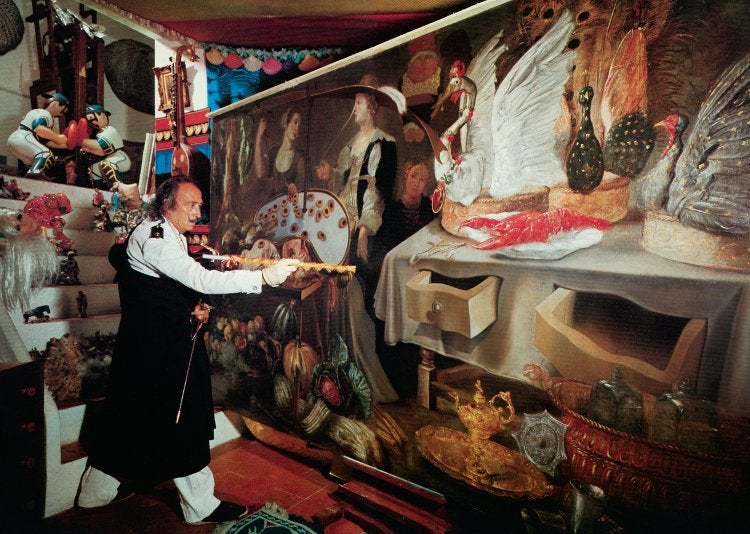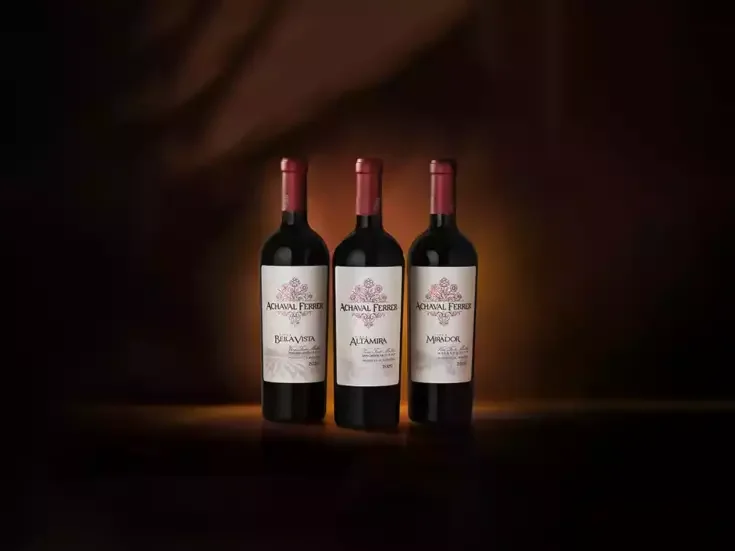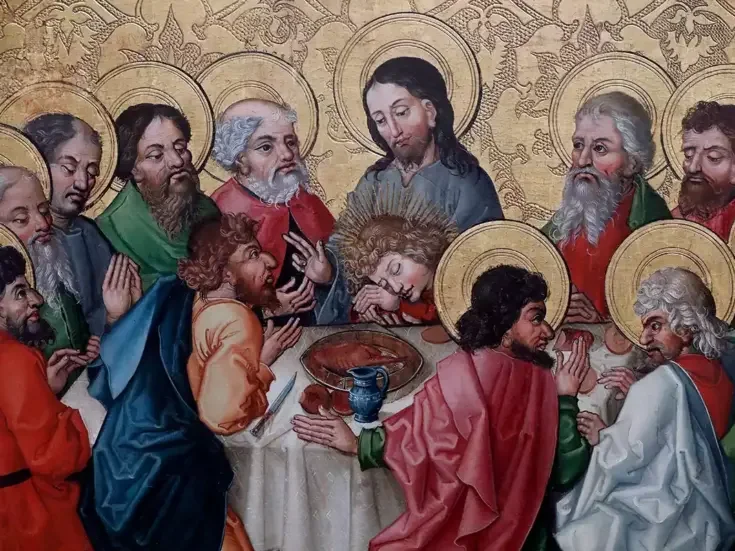
A surprisingly useful vinous worldview
For all that they might debate the merit of his instantly recognizable work—how well his once-startling mix of classical draftsmanship and the uncanny has stood the test of time; whether it ever offered more than a shock value that drew rapidly diminishing returns the more it was reproduced and remade as floppy clock gallery gift-shop knickknacks—there is one fact about Salvador Dalí on which both his critics and his supporters would agree: He was a shameless hack.
As an early prototype of that modern phenomenon the artist as international brand, Dalí always had his eye on ways of monetizing his strenuously cultivated image. The exaggerated wax-tipped mustache and look of haughty surprise were every bit as marketable as the Warhol fright-wig, and appeared, among other places, in well-remunerated TV commercials for brands such as Lanvin chocolate, Veterano brandy, and (in what I like to think was a knowingly satirical comment on the queasy effects of viewing the best of his early work) Alka-Seltzer. He was also unstintingly prolific, producing not just thousands of examples of paintings, lithographs, sculptures, photographs, films, and other visual forms but also an array of curious literary works, including a novel, diaries, autobiographies, manifestos, and fragments of poetry.
All of this means that it’s somehow not all that surprising that, at the very point (the 1970s) at which the gap between man and brand had narrowed to the point of imperceptibility, Dalí took up a commission for that most commercial of literary endeavors the cookbook, and that this should spawn a sequel devoted to wine. What is surprising—at least to this writer, based in a part of the world, Catalonia, where the Dalí brand is still at its most overbearingly omnipresent—is how much fun both Les Dîners de Gala (first published in 1973 and reprinted by Taschen in 2016) and the recently republished The Wines of Gala turn out to be.
Surrealistic intoxication
Named after Dalí’s wife and muse Gala Dalí, Les Dîners de Gala is a joyful surrealist cookbook, a mix of paintings and illustrations by Dalí with 137 recipes, some relatively ordinary, some (bush of crayfish in Viking herbs; frog pasties; 1,000-year-old eggs) anticipating the later molecular tomfoolery of fellow Catalan Ferran Adrià et al by a quarter of a century (and making it seem primly conservative by comparison). For all the convention-challenging menus and dream-like tableaux, however, the book also has its practical side; you could actually use and even, in some cases, conceivably enjoy many of the recipes (and the aphrodisiac advice).
The Wines of Gala is very much a companion volume that, like its predecessor, blends the surrealistic with the straightforwardly instructive. Much of this surrealistic intoxication is down to the images; reproductions of Dalí’s oil paintings from throughout his career are interspersed both with illustrations he produced specifically for the book and various repurposed, surreally touched-up “appropriations” of paintings from the classical canon (the latter amusingly reminiscent of the animated cut-ups created by Terry Gilliam for Monty Python).
A peculiar heady effect
But the text—or more precisely, the thematic arrangement of the text—also plays its part in shaking up conventions. Divided into two parts, the writing itself is the work of two co-authors— the long-term French Dalí collaborator Max Gérard and the French agronomist, writer, and wine administrator and marketer Louis Orizet. Gérard pens the first section: ten short, poetic pieces devoted to the history, production, and sensory impact of ten of Dalí’s chosen wines—from “The Wine of Aÿ” (aka Champagne), to “The Great Red Bordeaux Wines,” Romanée-Conti, and, more surprisingly (the text having been written but a year after the Judgment of Paris), California.
In the second section, Orizet—a former head of INAO whose largest claim to fame was coining the slogan “Le Beaujolais Nouveau est arrivé” —is charged with describing Ten Gala Wines, by which he (or Dalí) really means styles, though not at all in a sense used by other wine books. Ranging from “Wines of Joy,” to “Wines of the Impossible,” via “Wines of Purple,” “Wines of Aestheticism,” and “Wines of Dawn,” these categories turn out to be surprisingly useful ways of organizing a vinous worldview. “Wines of Dawn” is essentially rosé—Côtes de Provence, Tavel, Rosé de Cabernet d’Anjou—a category so named because “these wines evoke in our minds a summer morning all moist with dew. What image could better translate the pleasure of a gourmet asked to look at a bottle of Côtes de Provence, haloed, imbued with that tender color which precedes the rising of the sun and gives his hand a feeling of morning coolness?”
“Wines of Joy,” meanwhile, include wines both red and white (Beaujolais, Chinon, Muscadet, and Swiss white wines among them) that “carry a harmony of cheer supported by a simple melodic line, so pure as to be almost abstract and as ardent and as joyful as a ray of sunshine.”
As you can see, the text (and these are by no means isolated examples) verges on the florid. But what might, in another context, be a little de trop here seems all of a piece with The Wines of Gala’s peculiar, heady effect.
It also contributes to what, for a contemporary reader, is another significant part of its allure. Like Les Dîners de Gala—the original run of 400 of which had become something of a cult collector’s item for foodies—the Taschen reprint of The Wines of Gala is a lavishly executed facsimile edition of the original, which was first published in 1977. As such, much of its appeal is now distinctly nostalgic. The font, the saturated colors, and, yes, the grandiose, poetic style—not to mention such of-their-time wine choices as Swiss Merlot (a “wine of purple”) and Crépy (a “wine of frivolity”)—all have a decidedly 1970s retro texture. And if, like a Persistence of Memory print duvet cover or a jewel-encrusted Eye of Time brooch, this means that the original shock of surrealism has been converted once again into an (in this case, highly desirable) item of merchandise, at least, one imagines, its creator would have been proud.
Published by Taschen $60 / £50 / €50







